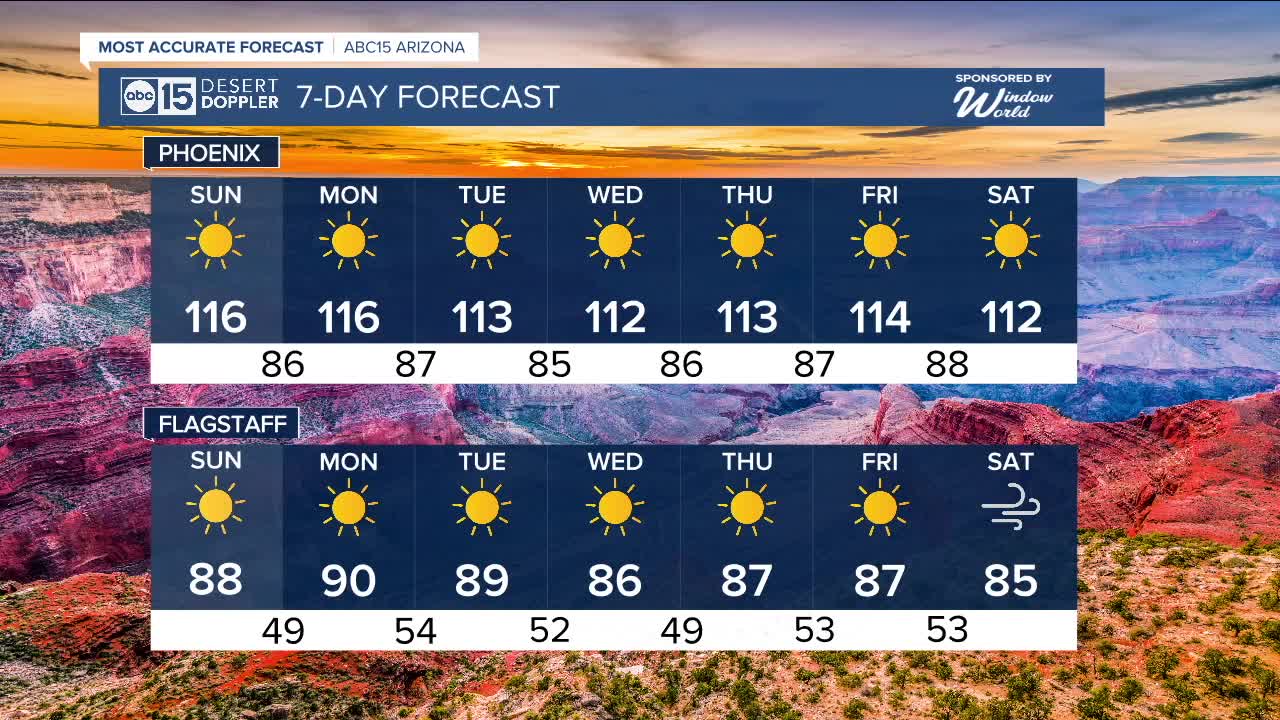Why Your Weather Forecast Might Not Include An Excessive Heat Warning

Table of Contents
The Criteria for Issuing an Excessive Heat Warning
An Excessive Heat Warning isn't issued lightly. Meteorological agencies employ stringent criteria, focusing on both temperature and humidity. The combination of high temperatures and high humidity creates a heat index, a measure of how hot it feels to the human body. This heat index is a crucial factor. A simple temperature reading alone doesn't tell the whole story. The warning isn't just about the air temperature; it's about the risk to human health.
The specific temperature thresholds for an Excessive Heat Warning vary by region and even locally. For example, what might trigger an Excessive Heat Warning in a typically cooler, northern climate could be quite different from the threshold in a consistently hotter, southern climate.
- Specific temperature thresholds: These vary widely based on location and historical data. For example, a temperature of 95°F (35°C) might trigger a warning in one area, whereas 105°F (40°C) might be necessary in another, accounting for acclimatization and typical summer temperatures.
- Duration of extreme heat: A single day of extreme heat might warrant a Heat Advisory, but a prolonged period of dangerously high temperatures and heat index – perhaps three or more consecutive days – is often required to trigger an Excessive Heat Warning.
- Impact on human health: The potential for heatstroke and other heat-related illnesses is central to the decision-making process. Warnings are issued when the risk to public health is considered significantly high.
- Vulnerable populations: The needs of vulnerable populations, including the elderly, young children, people with chronic illnesses, and those without access to air conditioning, are considered when assessing the risk.
It's important to understand the distinctions between different heat alerts:
- Heat Advisory: Indicates that the heat index is expected to pose a significant threat.
- Excessive Heat Warning: Indicates dangerous levels of heat that pose a significant threat to life and health. Immediate action is necessary.
- Excessive Heat Watch: Indicates that conditions are favorable for an Excessive Heat Warning to be issued in the near future.
Limitations of Weather Forecasting and Modeling
Predicting the weather, especially extreme weather events like prolonged periods of excessive heat, is inherently complex. Several limitations impact the accuracy and timeliness of forecasts:
- Accuracy decreases with longer forecast periods: Predicting the weather with precision several days in advance is challenging. The further out the forecast, the less certain it becomes.
- Regional variations in heat distribution: Temperature and humidity can vary significantly even within a small geographical area, creating microclimates that are difficult to model precisely.
- Influence of the urban heat island effect: Cities tend to be significantly hotter than surrounding rural areas, creating localized "heat islands" that complicate forecasting.
- Limitations of weather models in predicting extreme events: While weather models are constantly improving, predicting the precise timing and intensity of extreme heat events remains a significant challenge.
Local Variations in Warning Issuance
The thresholds and criteria for issuing an Excessive Heat Warning can differ subtly between national weather services and regional or local agencies. This discrepancy stems from differences in procedures, localized risk assessments, and the availability of resources.
- Differences between national and local weather services' procedures: National services might set broad guidelines, but regional and local agencies tailor those guidelines to their specific geographical areas and populations.
- Impact of population density on warning decisions: Densely populated urban areas might receive warnings sooner than less populated rural areas, even with similar temperature readings, due to heightened risk to a greater number of people.
- Role of local emergency management agencies: Local agencies play a crucial role in assessing the overall community risk, considering factors beyond just temperature.
- Variations in public health infrastructure: Areas with limited access to cooling centers or healthcare resources might receive warnings more readily, as the risk of heat-related illness is elevated.
Other Factors Affecting Warning Issuance
Beyond temperature and humidity, other factors influence whether an Excessive Heat Warning is issued:
- Air quality: Extreme heat often exacerbates air pollution, further increasing the health risks. Poor air quality could prompt an earlier warning even if temperatures are slightly below the strict thresholds.
- Availability of cooling centers and resources: If cooling centers or other resources are limited, warnings might be issued at lower temperature thresholds to ensure adequate preparation and access to safety.
- Recent history of heat-related illnesses: If an area has recently experienced a surge in heat-related illnesses, this will be a significant factor influencing the decision to issue a warning proactively.
Conclusion: Understanding and Preparing for Excessive Heat
While an Excessive Heat Warning is a crucial alert, its absence doesn't negate the risk of dangerous heat. Several factors—forecasting limitations, varying thresholds, and other contributing elements—can impact whether a warning is issued. Therefore, stay informed about the weather forecast, regardless of official warnings. Check your local weather regularly and pay close attention to the heat index. Prepare for excessive heat conditions by staying hydrated, limiting strenuous outdoor activity, and seeking out cool environments when necessary. Learn about local cooling centers and resources available in your community. Understanding these factors empowers you to take proactive steps to protect yourself and your family during periods of excessive heat. Check your local Excessive Heat Warning alerts and remember, being prepared is key to staying safe.

Featured Posts
-
 Ronaldo Caiado Pode Receber Titulo De Cidadao Baiano Apoio Da Fecomercio
May 30, 2025
Ronaldo Caiado Pode Receber Titulo De Cidadao Baiano Apoio Da Fecomercio
May 30, 2025 -
 Kyriakatikes Tileoptikes Ekpompes 4 5 Maioy
May 30, 2025
Kyriakatikes Tileoptikes Ekpompes 4 5 Maioy
May 30, 2025 -
 Analysis The Impact Of Us Solar Tariffs On Malaysia
May 30, 2025
Analysis The Impact Of Us Solar Tariffs On Malaysia
May 30, 2025 -
 De Financiele Aspecten Van Een Potentiele Anderlecht Transfer
May 30, 2025
De Financiele Aspecten Van Een Potentiele Anderlecht Transfer
May 30, 2025 -
 Lw Ansf Alqwmu Nhw Astqlal Hqyqy Weadl
May 30, 2025
Lw Ansf Alqwmu Nhw Astqlal Hqyqy Weadl
May 30, 2025
